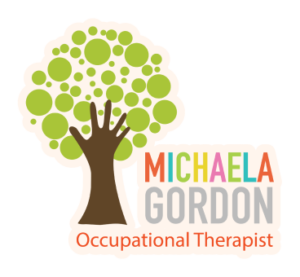Occupational therapy
Occupational therapy services can help your child acquire important developmental skills that will support them through their lifetime. You may already know about occupational therapy and you are looking for an occupational therapist for your child.
You may be new to learning about occupational therapy services and you are curious about how these services can help your child. The following information will help you determine whether occupational therapy would be beneficial to your child.
What Is Pediatric Occupational Therapy?
Pediatric occupational therapy (OT) is a type of therapy that promotes children’s skills of daily living with the goal to improve their level of independence and their quality of life. Occupational therapist looks at the whole child: their spirit, mind, and body and how they can best interact within their daily environments.
Occupational therapists have a wide scope of practice, overlapping with many other types of therapies due to studies in mental health, anatomy, physiology, and neurology. What makes pediatric occupational therapy unique, is the study of how children develop skills to participate in their daily occupations. Occupational therapists can help children develop skills in the following areas: sensory development, motor development, social emotional development, cognitive development, and self-care development.


What does the process look like once occupational therapy services start?
An occupational therapist will typically perform an individualized evaluation to assess the child’s present level of functioning. A plan of care is created including recommendations and goals to address the child’s specific needs. The child participates in direct therapy to address any noted concerns.
Therapy can be done in a variety of settings from the home, school, clinic, and other community settings. A home, school, and/or community program is established to ensure the carryover of therapeutic activities. Education may also be provided to parents, caregivers, and other professionals that are supporting the child in order to provide a full understanding of the child’s OT-based needs and to support them in carrying out specific recommendations in their daily environments.
What is Sensory Processing Disorder (SPD)?
Sensory processing disorder (SPD) is considered a dysfunction in which the sensory signals received through the nervous system are not organized into appropriate responses, impacting any area of a child’s development. SPD is typically pervasive and it disrupts a child’s enjoyment, their level of participation in activities of daily living, and/or their relationship with others.


What is Sensory Integrative Therapy?
Sensory integrative therapies provide specific sensory inputs to the different sensory systems with the goal of improving detection, organization, regulation, and integration of sensory information.
Sensory-based therapies also focus on improving a child’s ability to motor plan through various fine and gross motor tasks. While the child is engaging in these sensory-motor tasks, the therapist is shifting the environment and modifying the activities so the child can develop new adaptive behaviors. Sensory based therapies are typically done on a regular basis over a period of time until the child’s sensory processing skills have improved. We are able to observe whether the therapy was effective by noting changes in behavior, learning, and motor skills.

What are some indicators that your child may benefit from occupational therapy services?
- Difficulties handling daily stressors in their natural environments.
- Hyperactive: difficulty sitting still or attending to everyday tasks.
- Sluggish: difficulty participating in daily activities, slow to complete tasks, disinterested in movement activities, but may be fine once they are moving.
- Behavioral challenges: anxiousness, emotional outbursts, refusal to participate in activities.
- Low self-esteem.
- Coordination challenges when completing fine or gross motor tasks.
- Challenges with body awareness: bumping into people/things, leaning on furniture, using too much force when doing activities.
- Challenges with handwriting skills: large writing, letters off the line, poor spacing, writes too slow or fast.
- Challenges with fine motor skills: pencil grasp, cutting, managing containers, managing fasteners, managing games pieces to tabletop games.
- Reduced ocular motor skills: difficulty tracking objects or visually shifting to look at different objects.
- Challenges with visual motor integration: completion of puzzles, mazes, and other play or academic tabletop tasks.
- Attention difficulties.
- Difficulties with learning.
- Poor executive functioning: organization, time management, initiating tasks, completion of tasks.

